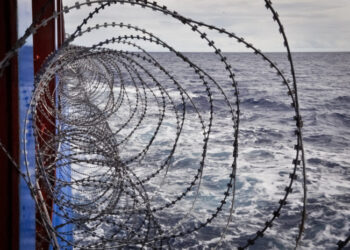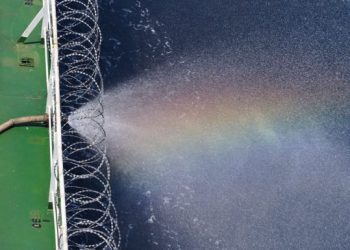Despite the introduction of regulations banning the use of asbestos materials onboard ship, a significant number of vessels continue to operate with the hazardous substance.
This is what the maritime testing facility Maritec found, after carrying out asbestos surveys for IMO compliance between 2011 and 2020. Specifically, Maritec found that more than 55% of in-service vessels and 50% of all newbuilds contained asbestos materials.
John Rendi, General Manager, Environmental Services, Maritec, commented:
Although newbuild ships are delivered with an asbestos free declaration, in many cases asbestos has been found onboard during subsequent surveys, or port state inspections. This is placing shipowners in a very difficult position. It can lead to fines and detentions along with the high cost associated with removal. More importantly, if seafarers and shipyard workers are unknowingly handling asbestos then they are at risk of developing a respiratory illness
According to SOLAS regulation II-1/3-5, asbestos is banned in all ships built after 2011. Ships built between 2002 and 2011 may have asbestos fitted but only in certain specified areas, such as rotary vane compressors and thermal insulation >1000C, for example.
If during an IHM survey asbestos is found onboard a ship built after 2002, then it must be removed within a period of three years and replaced with a non-asbestos equivalent.
Moreover, Maritec Operations Manager Alvin Lee added that the majority of vessels in operation contain asbestos, normally through spare parts in the form of gaskets, pipe gaskets and valve packing.
Pipe flange gaskets, valve packing and components in auxiliary machinery equipment, like pumps, compressors, condensers, and oil purifiers, accounted for more than 63% of all the asbestos found on the vessels surveyed.
Other equipment where asbestos is commonly found includes heat exchangers, economizers, boilers, and inert gas systems.
What is more, differing asbestos restrictions from country to country is a part of the problem. For example, the permissible threshold value for asbestos in the United States is 1% while in France it is zero. In Singapore it is 0.1%.
Countries do not necessarily share the same standards or asbestos restrictions. So, a gasket that is classified asbestos-free in Singapore or the US may not be considered asbestos-free in, say Australia, New Zealand or France, where the tolerance is higher when it comes to permissible value. It’s a big problem































































Removal of asbestos is not always required. It depends on the material found and what measures can be taken for ensuring safety and health. It´s the decision of the flag state when and how they accept AMMPs (Asbestos Maintenance and Management Plans) which should always include risk assessments and SOPs. Such AMMPs can prevent the owner from spending a lot of money for decontamination and in many cases safe handling can be achieved with little efforts. A good guidance is provided in MSC. Circ. 1345 and the applicable scope needs to be carefully analysed, then it becomes clear for which ships the measurers can be applied and accepted, which are basically those for which the asbestos ban is relevant as well.